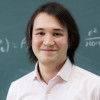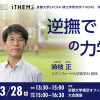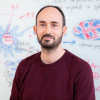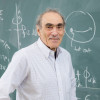179 events in 2024
-
Seminar
A socio-ecological and genomic approach to mixed-species formation of African forest guenons
April 4 (Thu) at 16:00 - 17:00, 2024
Haruka Kitayama (Ph.D. Student, Graduate School of Environmental Science, Hokkaido University)
While many animal groups consist of a single species, some species have been observed forming mixed-species groups (MSGs). It is thought that by forming groups with different species, animals may reduce predation risk, improve foraging efficiency, and even gain social and reproductive benefits. Red-tailed monkeys and blue monkeys, African forest guenons (Tribe Cercopithecini), are known to form MSGs in several regions in Africa, despite the large niche overlap. The underlying mechanisms driving the formation of MSGs in red-tailed monkeys and blue monkeys are still unclear. One reason is that previous studies have been limited to behavioral ecological approaches. By combining field observations with genomic analyses in the laboratory, we seek to shed light on the role of genetic factors in mediating interspecies interactions within MSGs. In this talk, I will introduce our studies on genomic introgression and gut microbiome sharing within the mixed-species population of red-tailed monkeys and blue monkeys in the Kalinzu Forest Reserve, Uganda.
Venue: via Zoom
Event Official Language: English
-
Seminar

Quantum simulation of QCD matter: from hadronic scattering to gauge field qubit encoding
April 3 (Wed) at 10:00 - 11:00, 2024
Tianyin Li (Ph.D. Student, Institute of Quantum Matter, South China Normal University, China)
Recently, quantum computing (QC) has become a new method for solving non-perturbative problems in high-energy physics. Compared to traditional Monte Carlo simulations, the QC method does not encounter the sign problem, making it an effective approach for solving dynamical and finite density problems. The first part of this talk focuses on the quantum simulation of the hadronic scattering process, including the initial state parton distribution functions, intermediate state partonic scattering amplitudes, and final state hadronization. The second part of this talk concentrates on the qubit encoding of Hamiltonian formalism in lattice gauge field theory with a Coulomb gauge. As a preliminary attempt, the qubit encoding of (3+1)-dimensional Coulomb gauge QED will be discussed.
Venue: via Zoom
Event Official Language: English
-
Special Lecture

TadaFest 2024: Toward understanding of the Origin of Spacetime
April 2 (Tue) at 14:00 - 18:00, 2024
Tsukasa Tada (Deputy Program Director, RIKEN Interdisciplinary Theoretical and Mathematical Sciences Program (iTHEMS))
Program 14:00-14:05 Welcome address T. Hatsuda (RIKEN iTHEMS) 14:05-15:35 T. Tada (RIKEN iTHEMS) "Toward understanding of the origin of spacetime" (This talk is in English) 15:35-16:00 coffee break 16:00-16:30 Shin Nakamura (Chuo Univ.) "Application of gauge/gravity duality: application to non-equilibrium physics" (This talk is in Japanese) 16:30-17:00 Kinya Oda (Tokyo Woman's Chiristian Univ.) "Gaussian formalism: From Hesenberg's Uncertainty Principle to Time-Boundary Effect and Lorentz-Covariant Complete Basis for Spinors" (This talk is in Japanese) 17:00-17:30 Gen Tatara (RIKEN, CEMS) "Some topics of spintronics" (This talk is in Japanese) 17:30-18:00 Asato Tsuchiya (Shizuoka Univ.) "Recent progress in the studies of the emergence of space-time in the type IIB matrix model" (This talk is in Japanese) 18:15- informal discussion @ Common space on 3F of the main research building
Venue: Okochi Hall (Main Venue) / via Zoom
Event Official Language: English
-
Seminar
Coarse-graining black holes out of equilibrium with boundary observables on time slice
April 1 (Mon) at 16:00 - 17:30, 2024
Daichi Takeda (Ph.D. Student, Theoretical Particle Physics Group, Kyoto University)
In black hole thermodynamics, defining coarse-grained entropy for dynamical black holes has long been a challenge, and various proposals, such as generalized entropy, have been explored. Guided by the AdS/CFT, we introduce a new definition of coarse-grained entropy for a dynamical black hole in Lorentzian Einstein gravity. On each time slice, this entropy is defined as the horizon area of an auxiliary Euclidean black hole that shares the same mass, (angular) momenta, and asymptotic normalizable matter modes with the original Lorentzian solution. The entropy is shown to satisfy a generalized first law within Einstein theory and, through holography, the second law as well. This second law corresponds to the positivity of the relative entropy in the CFT. Furthermore, by applying this thermodynamics to several Vaidya models in AdS and flat spacetime, we discover a connection between the second law and the null energy condition.
Venue: Seminar Room #359 (Main Venue) / via Zoom
Event Official Language: English
-
Seminar

A Selective Survey of Ideas, Tools and Results in Constructive QFT II
April 1 (Mon) at 13:00 - 14:30, 2024
Christy Koji Kelly (Special Postdoctoral Researcher, RIKEN Interdisciplinary Theoretical and Mathematical Sciences Program (iTHEMS))
In this talk we continue to discuss the constructive programme in rigorous QFT. Our aim is discuss a few points on difficulties in relation to the definition of Euclidean path integrals and the general strategy of constructive field theory from a constructive perspective. This will motivate a discussion of the fundamental results in probability theory which are the main tools for the construction of Euclidean path integral measures. We might also discuss some points in relation to free fields, including in particular difficulties in the characterisation of massless fields.
Venue: via Zoom / Seminar Room #359
Event Official Language: English
-
Special Lecture

Kyoto University SACRA-RIKEN iTHEMS Special Lecture by Prof. Tadashi Tokieda
March 28 (Thu) at 13:30 - 16:30, 2024
Tadashi Tokieda (Professor, Department of Mathematics, Stanford University, USA)
This event will be conducted in Japanese.
Venue: Large Conference Room, The Kyoto University Tokyo Office
Event Official Language: Japanese
-
Seminar
Fast Rotating Neutron Stars: Spectra, Stability and Universal Relations
March 27 (Wed) at 11:00 - 12:30, 2024
Christian Krueger (Postdoctoral Researcher, University of Tuebingen, Germany)
In this talk, we study rapidly rotating relativistic stars which are present in various astrophysical systems. First, we study their oscillations and instabilities by taking into account the contribution of a dynamic space-time. The study is based on the linearised version of Einstein’s equations and via this approach the oscillation frequencies as well as the critical values for the onset of a secular instability are determined. We show asteroseismological relations for the fundamental eigenfrequency which are crucial for tackling the inverse problem. Further, we provide universal relations that allow to estimate the moment of inertia (and other bulk quantities) from the knowledge of the triple mass, radius and moment of inertia of an associated non-rotating star. The proposed universal relations facilitate computationally cheap EOS inference codes that permit the inclusion of observations of rotating neutron stars. As a demonstration, we deploy them into a recent Bayesian framework for equation of state parameter estimation that is now valid for arbitrary, uniform rotation. The results are important for all stages of a neutron star’s life but particularly interesting in pre- and post-merger cases. This seminar is held by GW-EOS WG in iTHEMS.
Venue: Seminar Room #359 (Main Venue) / via Zoom
Event Official Language: English
-
Seminar
Arrhythmic activity rhythms in ants
March 26 (Tue) at 16:00 - 17:00, 2024
Haruna Fujioka (Assistant Professor, Faculty of Environmental, Life, Natural Science and Technology, Okayama University)
Most organisms exhibit a periodic activity of about 24 h. This circadian rhythm is considered to be an adaptation to the fluctuations of the environment. In social insects such as honeybees and ants, individual behavior, including activity-rest rhythms, is influenced by interactions within the colony. However, it is challenging to monitor individual activity-rest rhythms in an ant colony due to their large group size and small body size. To address this, we developed an image-based tracking system using 2D barcodes a monomorphic ant and measured the locomotor activities of all colony members under laboratory conditions. Activity-rest rhythms appeared only in isolated ants, not under colony conditions. This suggests that a mixture of social interactions, not light and temperature, induces the loss of activity-rest rhythms. These findings contribute to our understanding of the diverse patterns of circadian activity rhythms in social insects.
Venue: via Zoom
Event Official Language: English
-
Seminar
Multimessenger probes of superheavy dark matter decay and annihilation
March 26 (Tue) at 10:18 - 11:00, 2024
Saikat Das (Postdoctoral Fellow, Yukawa Institute for Theoretical Physics, Kyoto University)
We revisit constraints on decaying very heavy dark matter (VHDM) using the latest ultrahigh-energy cosmic-ray (UHECR; E >1e18 eV) data and ultrahigh-energy (UHE) gamma-ray flux upper limits, measured by the Pierre Auger Observatory. We present updated limits on the VHDM lifetime for masses up to ∼ 1e15 GeV, considering decay into quarks, leptons, and massive bosons. In particular, we consider not only the UHECR spectrum but their composition data that favors heavier nuclei. Such a combined analysis improves the limits at <1e12 GeV because VHDM decay does not produce UHECR nuclei. We also show that the constraints from the UHE gamma-ray upper limits are ∼ 10 times more stringent than that obtained from cosmic rays, for all of the Standard Model final states we consider. The latter improves our limits to VHDM lifetime by a factor of two for dark matter mass >1e12 GeV. We also provide constraints using neutrino flux from dark matter decay, including the neutrino-induced cascades. We consider the interaction of UHE neutrinos with the cosmic neutrino background, leading to the attenuation of the extragalactic flux reaching Earth, which improves our analysis to obtain tighter constraints.
Venue: via Zoom
Event Official Language: English
-
Seminar
The evolution of unusual inheritance and chromosome behaviour in flies and other critters
March 14 (Thu) at 16:00 - 17:00, 2024
Laura Ross (Senior Lecturer, Institute of Evolutionary Biology, University of Edinburgh, UK)
Under Mendelian inheritance, individuals receive one set of chromosomes from each of their parents, and transmit one set of these chromosomes at random to their offspring. Yet, in thousands of animals Mendel's laws are broken and the transmission of maternal and paternal alleles becomes unequal. Why such non-Mendelian reproductive systems have evolved repeatedly across the tree of life remains unclear. My lab studies a variety of arthropod species to understand why, when and how the transmission of genes from one generation to the next deviate from Mendel’s laws. We mainly focus on species with Paternal Genome Elimination: Males transmit only those chromosomes they inherited from their mother to their offspring, while paternal chromosomes are excluded from sperm through meiotic drive. I will present recent work aimed at understanding the evolution of this unusual reproductive strategy in a clade of flies. These flies arguably have one of the most bizarre and complex chromosome systems of any insect and we use this complexity to study a range of topics including the evolution of sex chromosomes, germline-restricted chromosomes and sexual conflict.
Venue: Seminar Room #359 / via Zoom
Event Official Language: English
-
Others

New horizons in immersive visualization at iTHEMS
March 14 (Thu) at 14:00 - 16:00, 2024
Gilles Ferrand (Adjunct Professor, Department of Physics and Astronomy, University of Manitoba, Canada)
Visualization is an essential part of research, both to explore one’s data and to communicate one’s findings with others. Data that are 3-dimensional can be explored in a more natural way using virtual reality devices. iTHEMS recently purchased new VR headsets with advanced capabilities (Meta Quest Pro). The meeting will start with a general introduction to the current state of the VR space. Then, participants may individually experience a demonstration with the new headsets (showing research done at the ABBL on supernovae and their remnants). There will be ample time for questions and discussions. Come and discover how such tools can be used to enhance our research.
Venue: 3rd floor public space, Main Research Building
Event Official Language: English
-
Seminar
Brane field theory with higher-form symmetry
March 12 (Tue) at 14:00 - 15:30, 2024
Kiyoharu Kawana (Research Fellow, Korea Institute for Advanced Study (KIAS), Republic of Korea)
We propose field theory for branes with higher-form symmetry as a generalization of ordinary Landau theory. The field \psi[C_p^{}] becomes a functional of p-dimensional closed brane Cp embedded in a spacetime. As a natural generalization of ordinary field theory, we call this theory brane field theory. In order to construct an action that is invariant under higher-form transformation, we first generalize the concept of “derivative” for higher-dimensional objects. Then, we discuss various fundamental properties of the brane field based on the higher-form invariant action. It is shown that the classical solution exhibits the area law in the unbroken phase of U(1) p-form symmetry, while it indicates a constant behavior in the broken phase for the large volume limit of Cp. In the latter case, the low-energy effective theory is described by the p-form Maxwell theory. If time permits, we also discuss brane-field theories with a discrete higher-form symmetry and show that the low-energy effective theory becomes a BF-type topological field theory, resulting in topological order.
Venue: Hybrid Format (3F #359 and Zoom), Main Research Building
Event Official Language: English
-
Workshop

Condensed Matter Physics of QCD 2024
March 11 (Mon) - 22 (Fri), 2024
Gordon Baym (Professor Emeritus, University of Illinois, USA)
Muneto Nitta (Professor, Keio University)
Mark Alford (Professor, Washington University in St. Louis, USA)
Sanjay Reddy (Professor, University of Washington, USA)
Dam Thanh Son (Professor, The University of Chicago, USA)
Mikhail Stephanov (Professor, The University of Illinois at Chicago (UIC), USA)
Kenji Fukushima (Professor, Department of Physics, Graduate School of Science, The University of Tokyo)
Naoki Yamamoto (Associate Professor, Keio University)
Koutarou Kyutoku (Associate Professor, Graduate School of Science, Kyoto University)
Yui Hayashi (Postdoctoral researcher, Yukawa Institute for Theoretical Physics, Kyoto University)
Kentaro Nishimura (Postdoctoral researcher, Hiroshima University)
Toru Kojo (Associate professor, Tohoku University)
Masakiyo Kitazawa (Lecturer, Yukawa Institute for Theoretical Physics, Kyoto University)QCD at finite temperature and density is one of the most challenging problems in modern physics, which plays a crucial role to understand the origin and coevolution of the universe and matter. On the one hand, the relativistic heavy-ion collision experiments in the past decades have opened a new and exciting field to explore physical properties of such a QCD matter at high-tempearture. On the other hand, recent astrophysical observations of compact stars (in particular, events involving neutron stars) is becoming another exciting tool to unveil properties of the dense QCD matter. This molecule-type workshop is aimed at bringing together theorists working on QCD at finite-temperature and density, with a particular focus on dense quark-nuclear matter relevant to neutron star physics. We will mainly cover macroscopic properties of the finite-density QCD matter such as the Lee-Yang edge singularity for a QCD critical point, the renewed Fermi liquid theory for quark-nuclear matter, nuclear superfluidity, color superconductivity, quark-hadron continuity, quantum vortex, and transport phenomena including the weak-intearction processes.
Venue: via Zoom / Yukawa Institute for Theoretical Physics, Kyoto University
Event Official Language: English
-
Seminar

Macroscopic neutrinoless double beta decay: long range quantum coherence
March 6 (Wed) at 15:30 - 17:30, 2024
Gordon Baym (Professor Emeritus, University of Illinois, USA)
This talk will introduce the concept of macroscopic neutrinoless double beta decay" (MDBD) for Majorana neutrinos. In this process an antineutrino produced by a nucleus undergoing beta decay, X→Y+e−+ˉνe, is absorbed as a neutrino by another identical X nucleus via the inverse beta decay reaction, νe+X→e−+Y. The distinct signature of MDBD is that the total kinetic energy of the two electrons equals twice the end-point energy of single beta decay. The amplitude for MDBD, a coherent sum over the contribution of different mass states of the intermediate neutrinos, reflects quantum coherence over macroscopic distances, and is a new macroscopic quantum effect. We discuss the similarities and differences between the MDBD and conventional neutrinoless double beta decay, as well as give estimates of the rates of MDBD and backgrounds.
Venue: Hybrid Format (3F #359 and Zoom), Main Research Building (Main Venue) / via Zoom
Event Official Language: English
-
Seminar
Do plants have bones? Silica phytoliths and their role and fate in the development of terrestrial plants and human civilizations
March 1 (Fri) at 14:00 - 15:15, 2024
Mikhail Blinnikov (Professor, St. Cloud State University, USA)
Silicon is the second most common element in the Earth’s crust. Some families of higher plants evolved mechanisms for soluble silica to be carried by xylem from groundwater and deposited as plant opal in or around plant cells as phytoliths thought to play a role in the structural support and defense against herbivores. While known since the early 19th century, phytoliths remain an intriguing class of microfossils whose formation and role in plants and their preservation in soils and sediments are a subject for a lot of active research. I outline some emerging themes in phytolith analysis including phytoliths’ role in global biogeochemical cycles, plant-herbivore interactions, and their tracing of evolution of cultural plants, especially cereals such as rice (Oryza), wild rice (Zizania), maize (Zea), wheat (Triticum) and millet (Panicum), all relevant to global archaeology. Some emerging research on phytoliths connects their changes in shapes to plant taxonomy of some families such as grasses and opens up avenues for further investigation of their active construction in the cells of some taxa by yet undiscovered genetically mediated mechanisms. New image analysis techniques and some advanced microscopy methods will allow us to further the field of phytolith study using deep machine learning algorithms and true 3D analysis of their shapes, something where contribution from other branches of science are most welcome.
Venue: Seminar Room #359 (Main Venue) / via Zoom
Event Official Language: English
-
Workshop
RIKEN-Nara Women's University Joint Diversity Promotion Workshop 2024
February 29 (Thu) - March 1 (Fri), 2024
The RIKEN Interdisciplinary Theoretical and Mathematical Sciences Program (iTHEMS) and the Faculty of Science at Nara Women's University are promoting a project to foster female researchers under the auspices of the RIKEN Diversity Promotion Office. As part of the program, 23 undergraduate and graduate students from Nara Women's University will visit several laboratories on the RIKEN Wako campus to ask questions about their research and hold workshops/presentations with iTHEMS researchers. Organizers: RIKEN Interdisciplinary Theoretical and Mathematical Sciences Program Faculty of Science, Nara Women's University Program: Thursday, February 29 13:30-14:00 Opening remarks by Tetsuo Hatsuda (C01, Main Research Bldg. room 246-248) 14:00-15:30 Atomic, Molecular & Optical Physics Laboratory (CPR) (C32, Laser Bldg. 2F) 15:30-17:00 Neural Circuit of Multisensory Integration RIKEN Hakubi Research Team (CBS) (C56, Brain Science Ikenohata Bldg. 3F) 17:00-18:30 RIKEN Interdisciplinary Theoretical and Mathematical Sciences Program (iTHEMS) (C01, Main Research Bldg. 3F) 18:30-21:00 Presentations by Nara Women's University Students (C01, Main Research Bldg. 3F) Friday, March 1 9:00-10:30 Nishina Center RIBF Facility (RNC) (E01, Nishina RIBF Bldg.) 10:30-12:00 Cellular Informatics Laboratory (CPR) (S01, Biology Science Bldg.3F) 12:00-13:00 Lunch (C61, Welfare and Conference Bldg.) 13:00 Closing
Venue: via Zoom
-
Seminar
Stochastic tunneling in de Sitter spacetime
February 28 (Wed) at 16:00 - 17:30, 2024
Taiga Miyachi (Ph.D. Student, Institute of Cosmophysics, Department of Physics, Graduate School of Science, Kobe University)
The formulation of tunneling in real time formalism is discussed. In the case of de Sitter spacetime, there is a method called the stochastic approach, which is known to reproduce the tunneling predicted by Hawking and Moss in the imaginary time formalism. In the case of accelerated expansion of space, the short-wavelength modes are stretched and transformed into long-wavelength modes. In the stochastic approach, such UV-IR transition is incorporated as quantum noise, and the dynamics of the long-wavelength modes are described by stochastic differential equations. In this talk, we construct a Schwinger-Keldysh path integral that reproduces this stochastic differential equation and reformulate the tunneling probability. We also reproduce the Hawking-Moss tunneling probabilities by using the saddle point approximation.
Venue: Seminar Room #359 (Main Venue) / via Zoom
Event Official Language: English
-
Seminar
Basic experimental considerations for analyzing gene expression
February 28 (Wed) at 13:00 - 14:00, 2024
Hirotaka Toh (JSPS PD Researcher, RNA Systems Biochemistry Laboratory, RIKEN Cluster for Pioneering Research (CPR))
Methods such as RNA-sequencing and ribosome profiling are indispensable tools for the comprehensive elucidation of the mechanisms underlying gene expression. A fundamental aspect that requires meticulous attention in the execution of these experiment is the extraction of intact RNA and Ribosomes. The integrity and purity of the extracted RNA is critical to ensure the accuracy and reliability of the sequencing data. In this seminar, I will introduce the basic but key points of the extraction process.
Venue: 3rd floor public space, Main Research Building
Event Official Language: English
-
Seminar

Using a trapped ion quantum computer for hamiltonian simulations
February 28 (Wed) at 10:30 - 12:00, 2024
Enrico Rinaldi (Senior Research Scientist, Quantum Machine Learning and Algorithms, Quantinuum K.K.)
Trapped ion quantum computers, like the H-series quantum hardware by Quantinuum, robustly encode quantum information in long lived and precise qubits. However, utilizing the hardware efficiently requires a full-stack workflow from software libraries to hardware compilers. In this talk we introduce the relevant elements of this stack in the context of solving the quantum dynamics of a spin system on H-series hardware: we start from the definition of the Hamiltonian operator in the qubit Hilbert space using the open-source pytket python library and we define the quantum circuits in measurements to run, on a simulator first and on hardware later.
Venue: Seminar Room #359 (Main Venue) / via Zoom
Event Official Language: English
-
Seminar
Plant hackers: galling insects extend their phenotypes on the trees by novel plant organogenesis
February 27 (Tue) at 16:00 - 17:00, 2024
Xin Tong (Special Postdoctoral Researcher, Cell Function Research Team, RIKEN Center for Sustainable Resource Science (CSRS))
When it comes to plant-insect interactions, insects are generally seen as pests like caterpillars eating vegetables or fruits. However, one group of insects, the galling insects can induce de novo organogenesis on the host plants which are often woody plants. Each galling insect species ‘designs’ its own gall as the extended phenotype which are so-called species-specific gall formation. Different from leaves and roots, galls represent unique plant organs swiftly formed in response to parasitic organisms, observed across diverse plant species. Yet, the precise mechanisms by which normal plant development is interrupted and redirected to form galls by galling organisms remain elusive. During the talk, I will share some discoveries and views related to aphid gall formation on the elm tree, which is the super host plant for more than 30 galling species, and further discussion about why an insect gall is not simple cell mass but well-organized structure, and how we could systematically understand insect gall formation.
Venue: Hybrid Format (3F #359 and Zoom), Main Research Building
Event Official Language: English
179 events in 2024
Events
Categories
series
- iTHEMS Colloquium
- MACS Colloquium
- iTHEMS Seminar
- iTHEMS Math Seminar
- DMWG Seminar
- iTHEMS Biology Seminar
- iTHEMS Theoretical Physics Seminar
- Information Theory SG Seminar
- Quantum Matter Seminar
- ABBL-iTHEMS Joint Astro Seminar
- Math-Phys Seminar
- Quantum Gravity Gatherings
- RIKEN Quantum Seminar
- Quantum Computation SG Seminar
- Asymptotics in Astrophysics SG Seminar
- GW-EOS WG Seminar
- DEEP-IN Seminar
- NEW WG Seminar
- Lab-Theory Standing Talks
- QFT-core Seminar
- STAMP Seminar
- QuCoIn Seminar
- Number Theory Seminar
- Academic-Industrial Innovation Lecture
- Berkeley-iTHEMS Seminar
- iTHEMS-RNC Meson Science Lab. Joint Seminar
- RIKEN Quantum Lecture
- Theory of Operator Algebras
- iTHEMS Intensive Course-Evolution of Cooperation
- Introduction to Public-Key Cryptography
- Knot Theory
- iTHES Theoretical Science Colloquium
- SUURI-COOL Seminar
- iTHES Seminar
